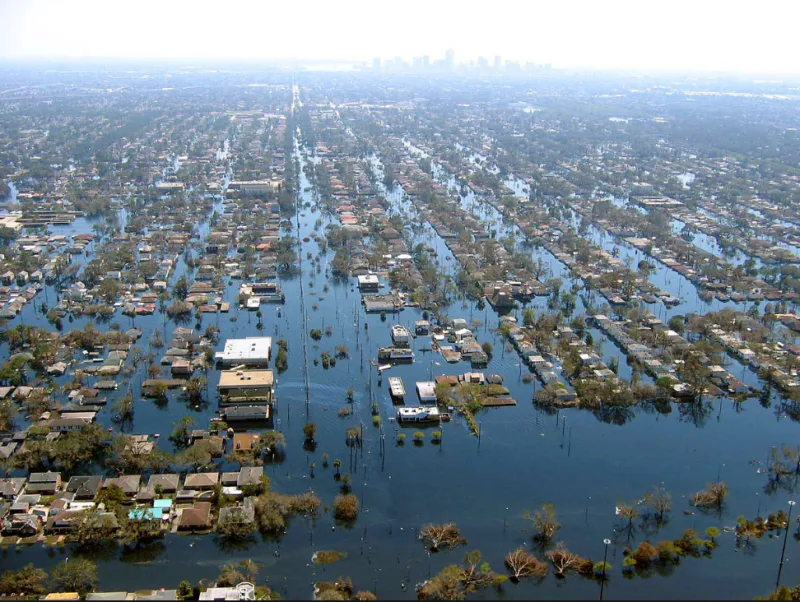
New Orleans' levees are sinking, city in vulnerable position
The levees currently give metro New Orleans its best defense against water, but that might not be enough in the coming years.
After a $14.6 billion-dollar upgrade, Army Corp engineers have confirmed that New Orleans’ levees are sinking.
The network of levees and floodwalls that protect the city from rising waters, was built after Hurricane Katrina impacted the area back in 2005.
Today, the monumental infrastructure, which includes a concrete surge barrier and the world's largest pump station, gives metro New Orleans its best defence against water, but that might not be enough in the coming years.
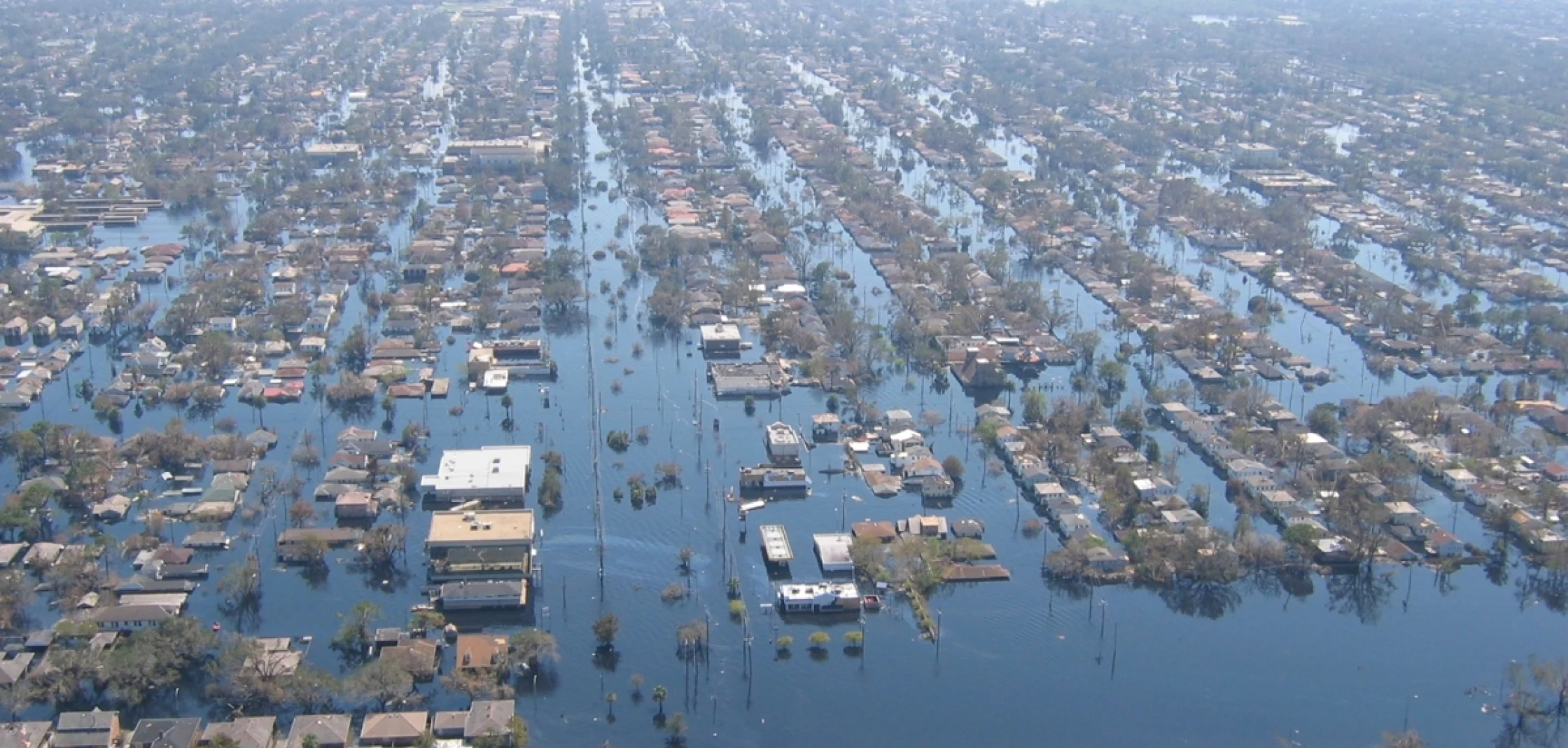
Photo shows New Orleans clooded after Hurricane Katrina (Courtesy: NOAA)
The Army Corp of Engineers is especially concerned about whether and when the new levee system will fall behind the increased risk of hurricane storm surges, resulting from climate change, subsequently increasing storm intensities and sea level change.
They’re also worried about the continued sinking of soils beneath the levees and the wetlands that protect them.
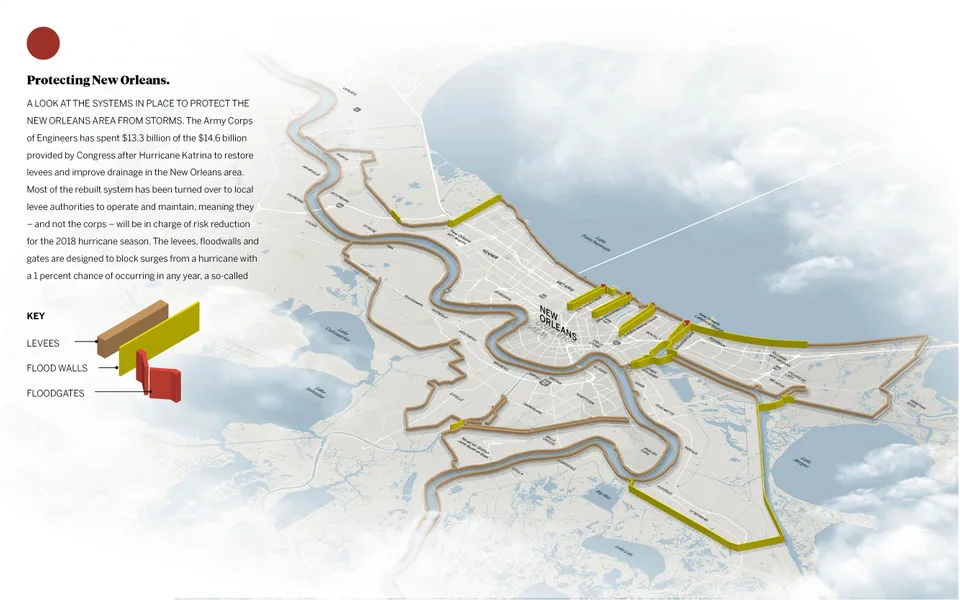
Image: Map of New Orleans' levees and floodwall (Courtesy Army Corps of Engineers)
Today, 11 months after one of the largest public works in world history has been completed, the system could stop providing adequate protection in as little as four years.
The army corps is being forced to begin assessing repair work of current structures, including raising additional levees and floodwalls to protect the city’s center and surrounding suburbs from rising waters.
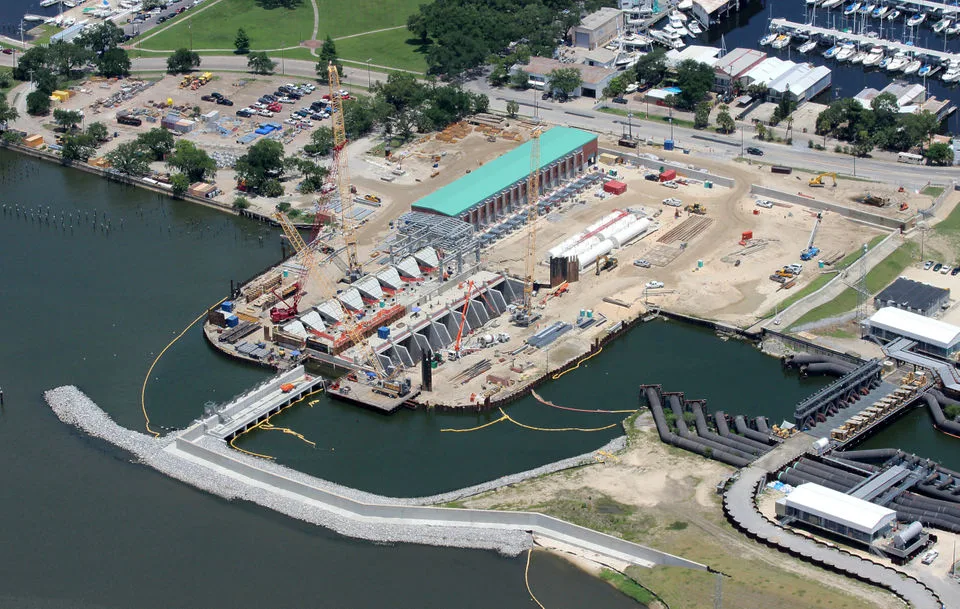
Image: Aerial view of the permanent pump station and gates at the end of the 17th Street Canal on May 30, 2016, during construction. (Courtesy Army Corps of Engineers)
According to Army Corps spokesman Matthew Roe, one of their most primary concerns is the eastern levees. The levees form a 540-kilometre maze of protection that includes concrete floodwalls, pump stations and gated structures.
The built levees are sinking as they settle into the soft Louisiana soils. The characteristics of the underlying ground in the area, together with the global impact of increasing sea levels, are making the situation even more unstable.
According to Roe, the deterioration is happening faster than projections estimated back in 2007.
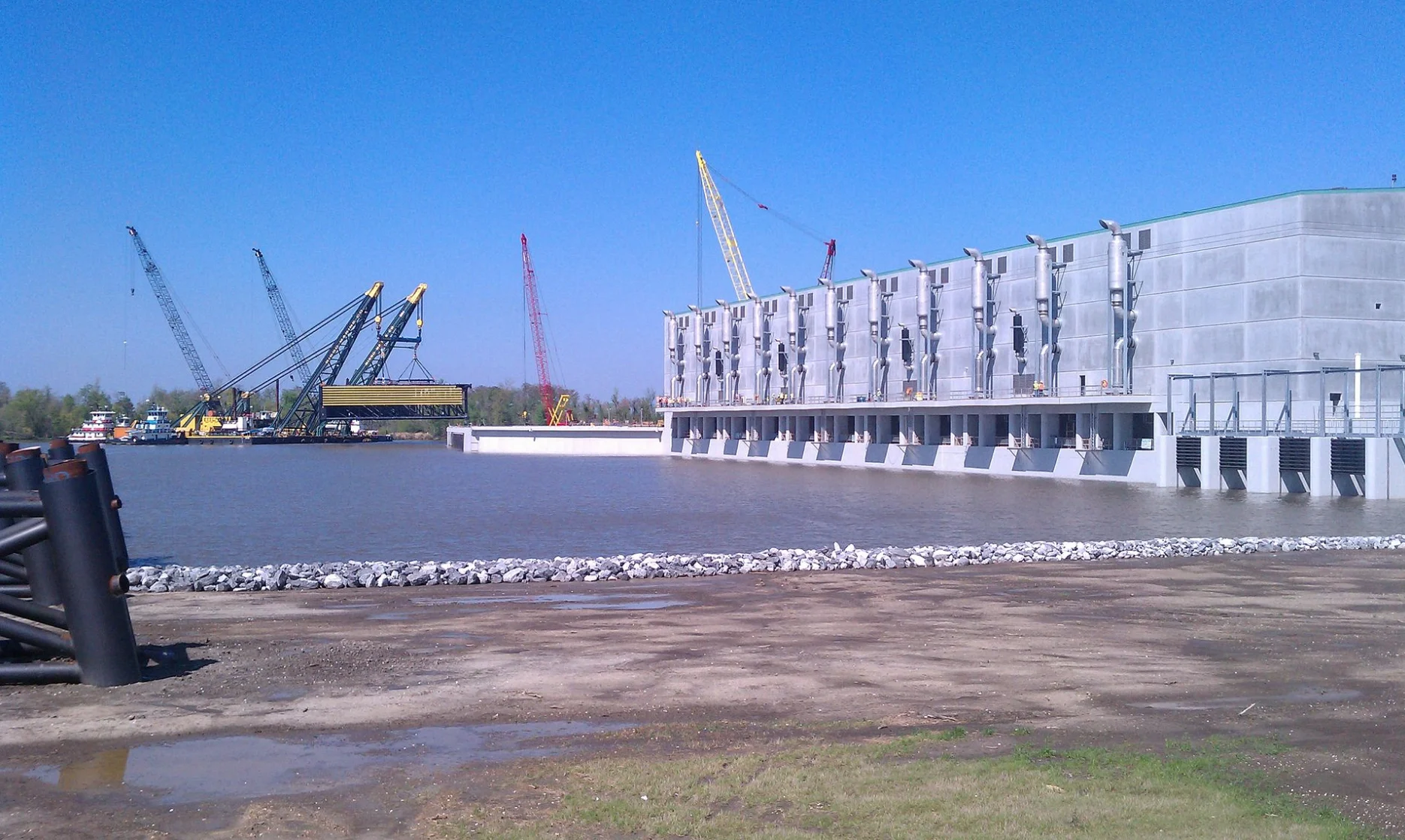
Gulf Intracoastal Waterway West Closure Complex (Courtesy: Brownie65/Wikipedia, Creative Commons)
A recent study of the entire flood protection system concludes that improvement of the east and west bank levees is feasible, and that the benefits outweigh the cost of construction.
The corps are authorized to do construction work on the projects through June 2024.
However, Congress must still appropriate the 75 per cent of construction money that the federal government would pay for the work. The state would have to come up with the remaining 25 per cent.
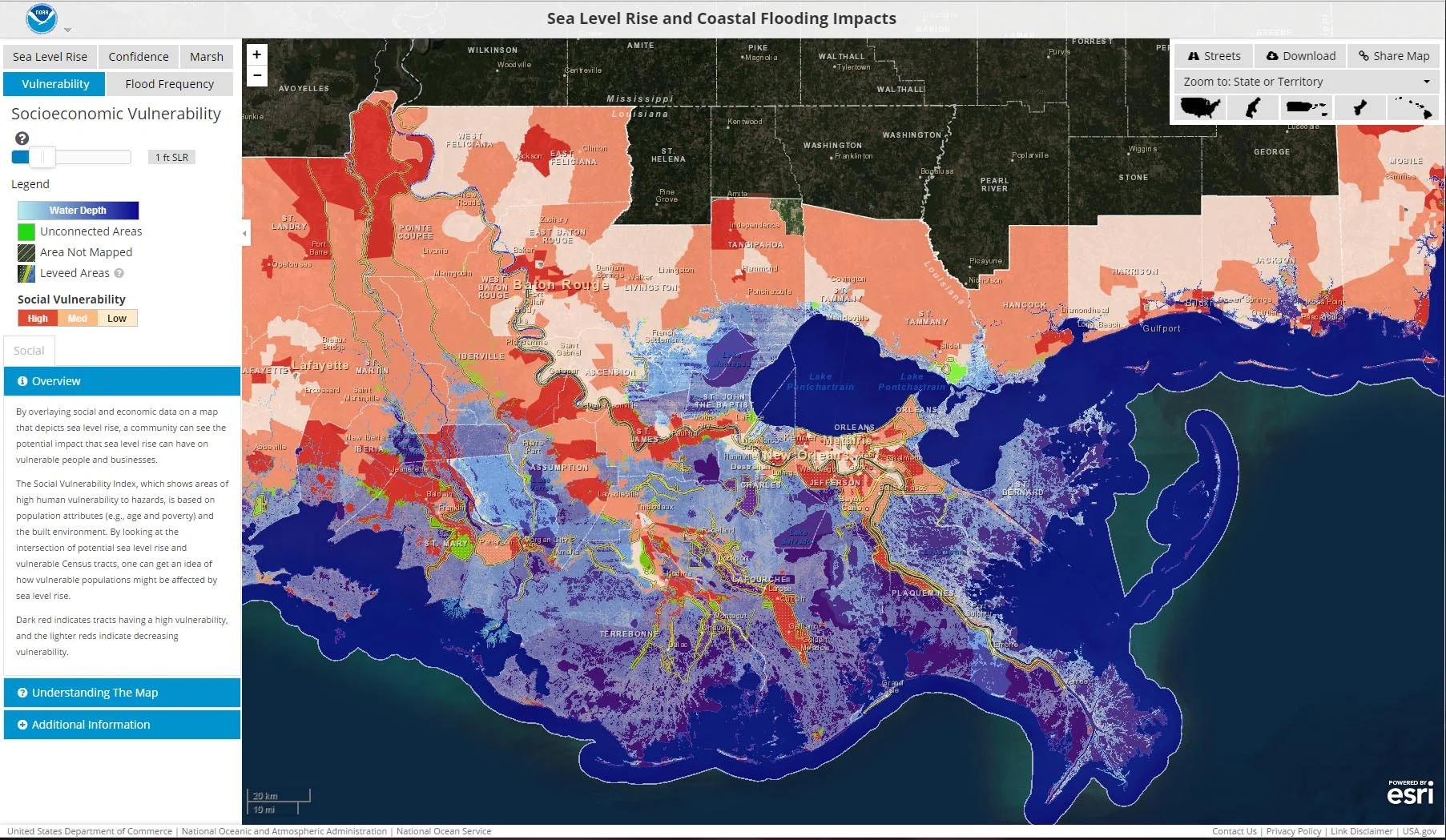
*Map of rising sea levels in New Orleans *
Since Katrina struck New Orleans in 2005, numerous studies have shown how vulnerable the city is to rising sea levels.
In 2016, the National Academy of Sciences projected that together with Manila, Jakarta, Bangkok, and New Orleans could be one of the hardest cities in the world to be hit by rising sea levels.
As the Army Corps explores making reinforcements to the system, it will model the effect of roughly 150 storms. These models will range from a small tropical depression to a mammoth 500-year storm that has only a 0.2 per cent chance of occurring each year. However, continued sea level changes in the future raise questions about whether the protective levee system should be built to a much higher standard.
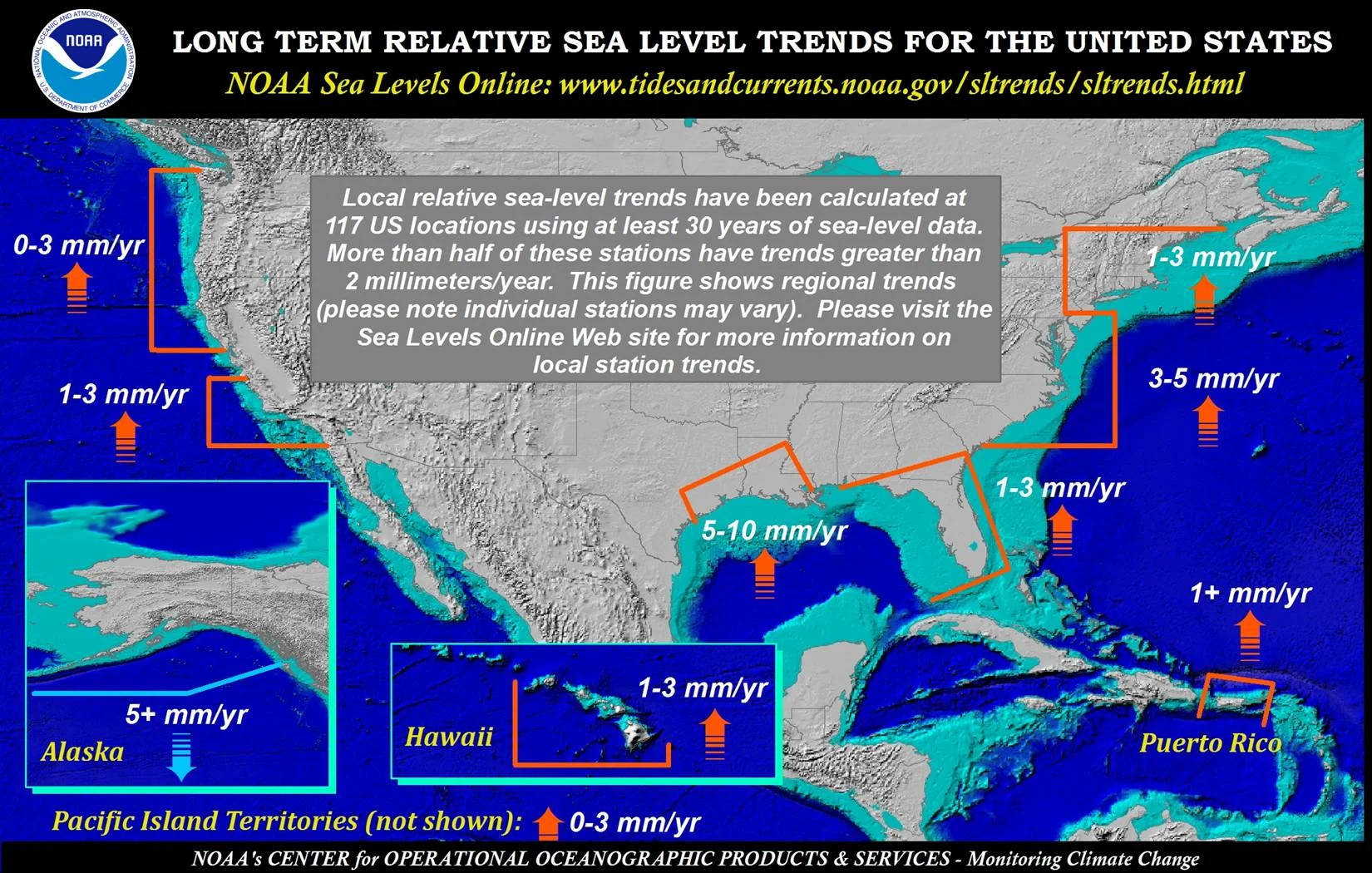
Map of Sea level Trends USA - NOAA
RELATED VIDEO: CALIFORNIA SEA LEVELS MAY RISE MUCH HIGHER THAN EXPECTED
Thumbnail image: Wikipedia












